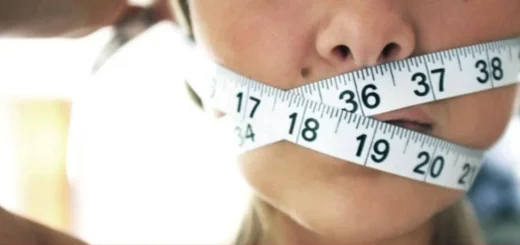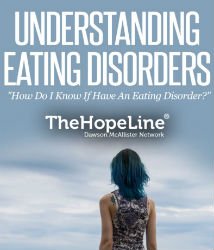Males and Eating Disorders
The following report was compiled by: Tom Shiltz, MS CADCIII, Rogers Memorial Hospital, Oconomowoc, WI.
Prevalence of Eating Disorders Among Males
- Approximately 10% of eating disordered individuals coming to the attention of mental health professionals are male (Wolf, 1991; Fairburn & Beglin, 1990).
- There is a broad consensus, however, that eating disorders in males are clinically similar to, if not indistinguishable from, eating disorders in females (Margo 1987; Schneider & Agras, 1987; Crisp et al., 1986; Vandereycken & Van der Broucke, 1984).
Gender Differences Regarding Dieting and Body Shape
A national survey of 11,467 high school students and 60,861 adults revealed the following gender differences (Serdula et al., 1993):
- Among the adults, 38% of the women and 24% of the men were trying to lose weight.
- Among high school students, 44% of the females and 15% of the males were attempting to lose weight.
- Based on a questionnaire administered to 226 college students (98 males and 128 females) concerning weight, body shape, dieting, and exercise history, the authors found that 26% of the men and 48% of the women described themselves as overweight. Women dieted to lose weight whereas men usually exercised (Drewnowski & Yee, 1987).
- A sample of 1,373 high school students revealed that girls (63%) were four times more likely than boys (16%) to be attempting to reduce weight through exercise and caloric intake reduction. Boys were three times more likely than girls to be trying to gain weight (28% versus 9%). The cultural ideal for body shape for men versus women continues to favor slender women and athletic, V-shaped muscular men (Rosen & Gross, 1987).
- In general, men appear to be more comfortable with their weight and perceive less pressure to be thin than women. A national survey indicated that only 41% of men are dissatisfied with their weight as compared with 55% of women; moreover, 77% of underweight men liked their appearance as opposed to 83% of underweight women. Males were more likely than females to claim that if they were fit and exercised regularly, they felt good about their bodies. Women were more concerned with aspects of their appearance, particularly weight (Cash, Winstead, & Janda, 1986).
Occupational Hazards
- Gymnasts, runners, body builders, rowers, wrestlers, jockeys, dancers, and swimmers are particularly vulnerable to eating disorders because their sports necessitate weight restriction (Andersen, Bartlett, Morgan, & Brownell, 1995). It is important to note, however, that weight loss in an attempt to improve athletic success differs from an eating disorder when the central psychopathology is absent.
The Media
- Nemeroff, Stein, Diehl, and Smilack (1994) suggest that males may be receiving increasing media messages regarding dieting, and ideal of muscularity, and plastic surgery options (such a pectoral and calf implants).
- DiDomenico and Andersen (1988) found that magazines targeted primarily to women included a greater number of articles and advertisements aimed at weight reduction (e.g., diet, calories) and those targeted at men contained more shape articles and advertisements (e.g., fitness, weight lifting, body building, or muscle toning). The magazines most read by females ages 18-24 had 10 times more diet content than those most popular among men in the same age group.
Sexual Attitudes, Behaviors and Endocrine Dysfunction
- Males with anorexia display a considerable degree of anxiety with regard to sexual activities and relationships. Fichter and Daser (1987) compared males and females with anorexia and found that males displayed significantly more sexual anxieties than did females. The authors noted that 80% of the males in their study grew up in families that regarded sex as a taboo subject. Corresponding with the reported sexual anxiety, low levels of sexual activity among the males with anorexia were also noted.
- Burns and Crisp (1984) found that males with anorexia in their study admitted “obvious relief” at the diminution of their sexual drive during the acute phase of their disease.
- Eating-disordered males differed significantly from eating-disordered females in terms of sexual experience in a study conducted by Herzog et al. (1984).
- Males with eating disorders were significantly less likely to have had sexual relations before the onset of their eating disorder, or to be involved in a sexual relationship at the time of evaluation than were females with eating disorders.
- Males with bulimia, however, appear to be more sexually active than males with anorexia, both premorbidly and at the time of their illness (Pope et al., 1986).
- A study by Andersen and Mickalide (1983) suggest that a disproportionate number of males with anorexia may have a persisting or preexisting problems in testosterone production.
Gender Dysphoria and Homosexuality
- Fichter and Daser (1987) found that males with anorexia saw themselves and were seen by others as more feminine than other men, both in attitudes and behavior. In general the males with anorexia appeared to identify more closely with their mothers than with their fathers.
- Homosexuals are over-represented in many samples of eating disordered men. While the proportion of male homosexuals in the general population cross-culturally is estimated to be 3%-5% (Whitman, 1983), samples of eating-disordered men are commonly twice as high or greater (Fichter & Daser, 1987).
- Several authors have noted that homosexual conflict preceded the onset of an eating disorder in up to 50% of male patients (Scott, 1986; Dally, 1969; Crisp, 1967).
- Conflict over gender identity or over sexual orientation may precipitate the development of an eating disorder in many males (Crisp, 1983). It may be that by reducing their sexual drive through starvation, patients can temporarily resolve their sexual conflicts (Crisp, 1970). ·
- Homosexual men may be at an increased risk for developing an eating disorder because of cultural pressures within the homosexual community to be thin (Schneider & Agras, 1987). Herzog et al., (1990) found that homosexual men weighed significantly less than heterosexual men, were more likely to be underweight and to desire an underweight ideal weight. Compared to the heterosexuals, homosexual men were less satisfied with their body build, and scored significantly higher on the “Drive for Thinness” scale of the Eating Disorders Inventory (EDI).
Body Image
- Body image concerns may be important predictors of eating disorders in males. Wertheim et al., (1992) found that a desire to be thinner was a more important predictor of weight loss behaviors than psychological or family variables, for both male and female adolescents.
- Kearney-Cooke and Steichen-Asch (1990) found that the preferred body shape for contemporary men without eating disorders was the V-shaped body, whereas the eating-disordered group strove for the “lean, toned, thin” shape. The authors found that most of the men with eating disorders reported negative reactions from their peers. They reported being the last ones chosen for athletic teams and often cited being teased about their bodies as the times when they felt most ashamed of their bodies.
Family Influences and Personality Variables
- Kearney-Cooke and Steichen-Asch (1990) found that men with eating disorders tend to have dependent, avoidant, and passive-aggressive personality styles, and to have experienced negative reactions to their bodies from their peers while growing up. They tend to be closer to their mothers than their fathers. The authors concluded that “in our culture, muscular build, overt physical aggression, competence at athletics, competitiveness, and independence generally are regarded as desirable for males, whereas dependency, passivity, inhibition of physical aggression, smallness, and neatness are seen as more appropriate for females. Boys who later develop eating disorders do not conform to the cultural expectations for masculinity; they tend to be more dependent, passive, and non-athletic, traits which may lead to feelings of isolation and disparagement of body.”
References
Andersen, A.E., & Mickalide, A.D. (1983). Anorexia nervosa in the male: An underdiagnosed disorder. Psychosomatics, 24, 1067-1075.
Andersen, R.E., et al. (1995). Weight loss, psychological and nutritional patterns in competitive male body builders. International Journal of Eating Disorders, 18, 49-57.
Andersen, R.E. (1995). Eating Disorders in Males. In K. Brownell, K. & Fairburn, C.G., (Eds.), Eating Disorders and Obesity: A comprehensive Handbook. New York: Guilford Publications, Inc.
Burns, T. & Crisp, A.H. (1984). Outcome of anorexia nervosa in males. British Journal of Psychiatry, 145, 319-328.
Cash, T.F., Winstead, B.A., & Janda, L.H. (1986). The great American shape-up. Psychology Today, April, 30-37.
Crisp, A.H. (1967). Anorexia Nervosa. Hospital Medicine, 1, 713-718.
Crisp, A.H. (1970). Anorexia nervosa, “feeding disorder,” “nervous malnutrition,” or “weight phobia?” World Review of Nutrition and Dietetics, 12, 452-504.
Crisp, A.H. (1983). Some aspects of the psychopathology of anorexia nervosa. In P.L. Darby et al, (Eds.), Anorexia Nervosa: Recent Developments in Research (pp. 15-28). New York: Alan Liss
Crisp, A.H., et al. (1986). Primary anorexia nervosa in the male and female: A comparison of clinical features and prognosis. British Journal of Medical Psychology, 59, 123-132.
Dally, P. (1969). Anorexia Nervosa. London: Heinemann Medical Books.
DiDomenico, L., & Andersen, A.E. (1988). Sociocultural considerations and sex differences in anorexia nervosa. In A. Andersen (Ed.), Males with eating disorders (p. 31). New York: Brunner/Mazel.
Drewnowski, A., & Yee, D.K. (1987). Men and body image: Are males satisfied with their body weight? Psychosomatic Medicine, 49, 626-634.
Shiltz, T. (1997). Eating Concerns Support Group Curriculum. Greenfield, WI: Community Recovery Press.
Vandereycken, W., & Van der Broucke, S. (1984). Anorexia nervosa in males. Acta Psychiatrica Scandinavica, 70, 447-454.
Wertheim, E.H. et al. (1992). Psychosocial predictors of weight loss behaviors and binge eating in adolescent girls and boys. International Journal of Eating Disorders, 12, 151-160.
Whitman, F.L. (1983). Culturally invariable properties of male homosexuality: Tentative conclusions from cross-cultural research. Archives of Sexual Behavior, 12, 207-226. Wolf, N. (1991). The beauty myth. New York: William Morrow. © 2000 EDAP. This handout may be reproduced for educational purposes only.










Recent Comments